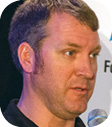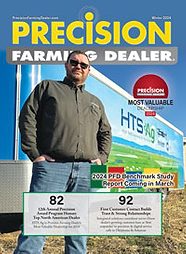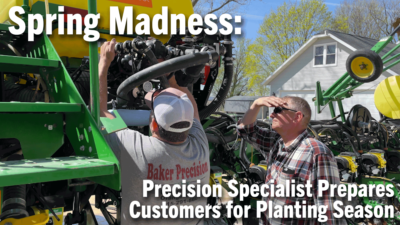Q What areas of precision hold the most promise to increase revenue in the coming year and what obstacles present the greatest barriers?
 Conklin: “Our business model revolves around the ability to turn data into information. The future of telematics is very promising, whether it’s an OEM option or something from a third party that we can offer for a mixed fleet operation. We want to be able to connect data to the consultant/CCA from the equipment in a timely manner without error. We have trouble with corrupt information or data cards that get lost or damaged. No matter how the data gets lost, it’s a big problem. If we can implement telematics into the operation, we can solve the problem moving forward, which should increase revenue and prove value.
Conklin: “Our business model revolves around the ability to turn data into information. The future of telematics is very promising, whether it’s an OEM option or something from a third party that we can offer for a mixed fleet operation. We want to be able to connect data to the consultant/CCA from the equipment in a timely manner without error. We have trouble with corrupt information or data cards that get lost or damaged. No matter how the data gets lost, it’s a big problem. If we can implement telematics into the operation, we can solve the problem moving forward, which should increase revenue and prove value.
“The obstacle is customers’ perception of telematics. It is viewed to be difficult and expensive, but neither one is actually true. Educating the customers on the technology is a barrier. We’re very cautious when using the term telematics. Customers automatically back up from the conversation because of the perception that has been created by lack of end-user education. The next few years will surely reveal the true importance of data privacy and what that really means.”
 McCullough: “In the next year, the greatest area to increase precision revenue will be in getting the farmers with older equipment on board with precision technology and guidance. A lot of them think, ‘I’ve already got this drill paid for, so it’s not costing me anything now.’ But they need to consider the cost of repairs and maintenance and need to be thinking about how they’re going to buy a new drill when the current one dies.
McCullough: “In the next year, the greatest area to increase precision revenue will be in getting the farmers with older equipment on board with precision technology and guidance. A lot of them think, ‘I’ve already got this drill paid for, so it’s not costing me anything now.’ But they need to consider the cost of repairs and maintenance and need to be thinking about how they’re going to buy a new drill when the current one dies.
“I think the obstacle to getting these customers on board with precision technology is commodity prices because customers aren’t looking to spend a lot of money right now. We have to be able to explain to the customer that the precision system isn’t costing them money, it’s saving them in the long run because they’re able to save in other places. A guidance system will pay for itself and then return money every year.”
 Hlavinka: “It becomes increasingly difficult to sell a new tractor or combine when commodity prices fall, but with precision farming, if we can show how much the customer can save in one year on fertilizer or seed by investing in precision technology, we can bring in more precision customers. That’s going to be our silver lining in a down market.
Hlavinka: “It becomes increasingly difficult to sell a new tractor or combine when commodity prices fall, but with precision farming, if we can show how much the customer can save in one year on fertilizer or seed by investing in precision technology, we can bring in more precision customers. That’s going to be our silver lining in a down market.
“The obstacle to getting there is convincing customers to invest in precision farming during a down market, because human nature is to pull in all your cards and play everything close to the vest. We have to find the trigger point for the customer so the investment makes sense in their head.
“As farmers get bigger and bigger fleets, what they do to one tractor, they have to do to the entire fleet. So if it will cost $25,000 per unit to integrate precision farming, when they include four or five units that adds up to a large investment. As more systems are sold every year, more are coming out of warranty and there are more opportunities for us to service them.”
 Pfitzer: “Data aggregation and predictive analytics hold promise, though I use that term very loosely because I don’t know what it’s going to look like yet. We want to commit a critical mass on quality data aggregation. We want to build data sets on years 3, 4 and 5 from parcels of land on water holding capacity, soil type or transitions.
Pfitzer: “Data aggregation and predictive analytics hold promise, though I use that term very loosely because I don’t know what it’s going to look like yet. We want to commit a critical mass on quality data aggregation. We want to build data sets on years 3, 4 and 5 from parcels of land on water holding capacity, soil type or transitions.
“This data can allow everyone in the industry to make better decisions on a macro level. I think this holds enormous potential because then we’ll have companies going to customers and paying them for their data. Customers will be paid, essentially, for virtual farming.
“However, the barrier to this massive data aggregation is being able to cobble together the right third party relationships with the right majors.”







Post a comment
Report Abusive Comment